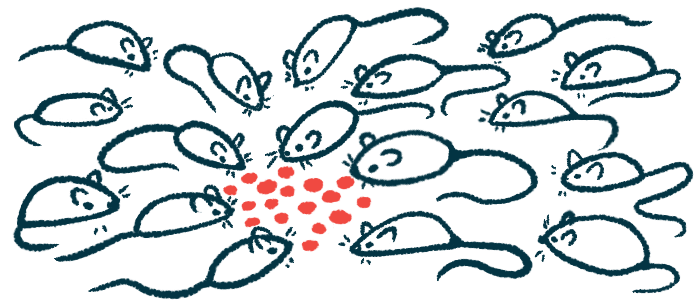Immune complement system not key to CMT1A progression: Study
Blocking protein C6 did not stop motor function loss in mouse model
Written by |

Blocking the immune complement protein C6 sped up the recovery of nerve damage and reduced inflammation in a mouse model of Charcot-Marie-Tooth disease type 1A (CMT1A), but it had no impact on the progressive loss of motor function, a study reports.
These data suggest that C6 and related proteins, part of the complement system — a group of immunological proteins that help fight off disease-causing microbes — is not a main driver of CMT1A progression.
The mouse study, “The systemic inhibition of the terminal complement system reduces neuroinflammation but does not improve motor function in mouse models of CMT1A with overexpressed PMP22,” was published in the journal Current Research in Neurobiology.
CMT1A mainly caused by extra copies of PMP22 gene
CMT1A is mainly caused by extra copies of the PMP22 gene, which leads to the overproduction of the PMP22 protein, a critical component of myelin, or the fat-rich layer covering nerve fibers.
Improper processing of excess PMP22 protein disrupts the function of the myelin sheath, slowing the transmission of nerve signals between the brain and muscles. As a result, people with CMT1A experience symptoms of weakness and wasting (atrophy) in the lower leg muscles beginning in adolescence, followed by hand weakness and sensory loss.
Despite the same genetic defect occurring in most CMT1A patients, the impact of living with the disease varies widely from patient to patient, suggesting other factors may affect disease severity.
Chronic inflammation has been reported in some CMT1A patients. Further, several animal models suggest the driver of inflammation-related myelin loss in CMT1A is the complement system.
To investigate the role of the complement system in nerve inflammation and disease progression, researchers in the Netherlands blocked a key complement protein called C6 in two mouse models of CMT1A.
C6 combines with other proteins at the end phase (terminal) of the complement cascade response, forming a membrane attack complex (MAC) that kills bacteria (or damages tissues in mistaken immune attacks).
Analysis confirmed presence of 4 complement proteins in sciatic nerve of mice
In the first CMT1A model (C3-PMP22), mice carried five copies of the human PMP22 gene and, at three weeks of age, showed delayed myelination and mild muscle impairment that worsened with age. The second CMT1A model (C3-PMP22 c-Jun) had an additional mutation in c-Jun, a protein that controls the recycling of myelin building blocks such as fat-like lipids and cholesterol.
In both models, tissue analysis confirmed the presence of three complement proteins (C1q, C3, and C9) in the sciatic nerve, the major nerve that runs from the lower back to the legs. None of these proteins were found in the sciatic nerve in normal mice.
Sciatic nerves were then crushed in one hind paw, which led to neurodegeneration and sensory loss, while the other paw received a sham operation as a control. Sensory function recovered faster in animals treated with the C6 blocker than in untreated mice. Similar results were seen using an antibody targeting another complement protein called C5.
“This shows that inhibition of the terminal complement pathway increases the speed of functional recovery of the mouse sciatic nerve after crush,” the team wrote.
Gene activity analysis of sciatic nerves from both models obtained after C6-blocking demonstrated a limited set of biological pathways affected by treatment, including those associated with neuroinflammation and two signaling pathways related to various cellular processes (Rho GTPase and ERK/MAPK).
Blocking C6 had no effect on motor function in both mouse models
Motor function impairment developed between weeks four through 12 in both mouse models, with c-Jun-deficient animals showing more severe symptoms. Aging affected the balance of the c-Jun-deficient mice but not of the c-Jun-sufficient mice based on balance beam tests.
Blocking C6, however, had no effect on motor function in both mouse models, as measured with various tests, including the hanging wire test, paw strength, balance beam test, and gait analysis.
“Our data show that MAC formation is a driver for changes in the expression [activity] levels of genes involved in the neuroinflammation, EKR/MAPK and Rho GTPase pathways,” the researchers concluded. “Despite the potentially beneficial knockdown of systemic [body-wide] C6 on these pathways, a C6 antisense oligonucleotide treatment does not lead to a clinically relevant improvement of the motor function in mice overexpressing PMP22.”
“Our work presented here suggests that terminal complement activation and neuroinflammation is not a major force in disease progression in the CMT1A mouse models,” the researchers added.







